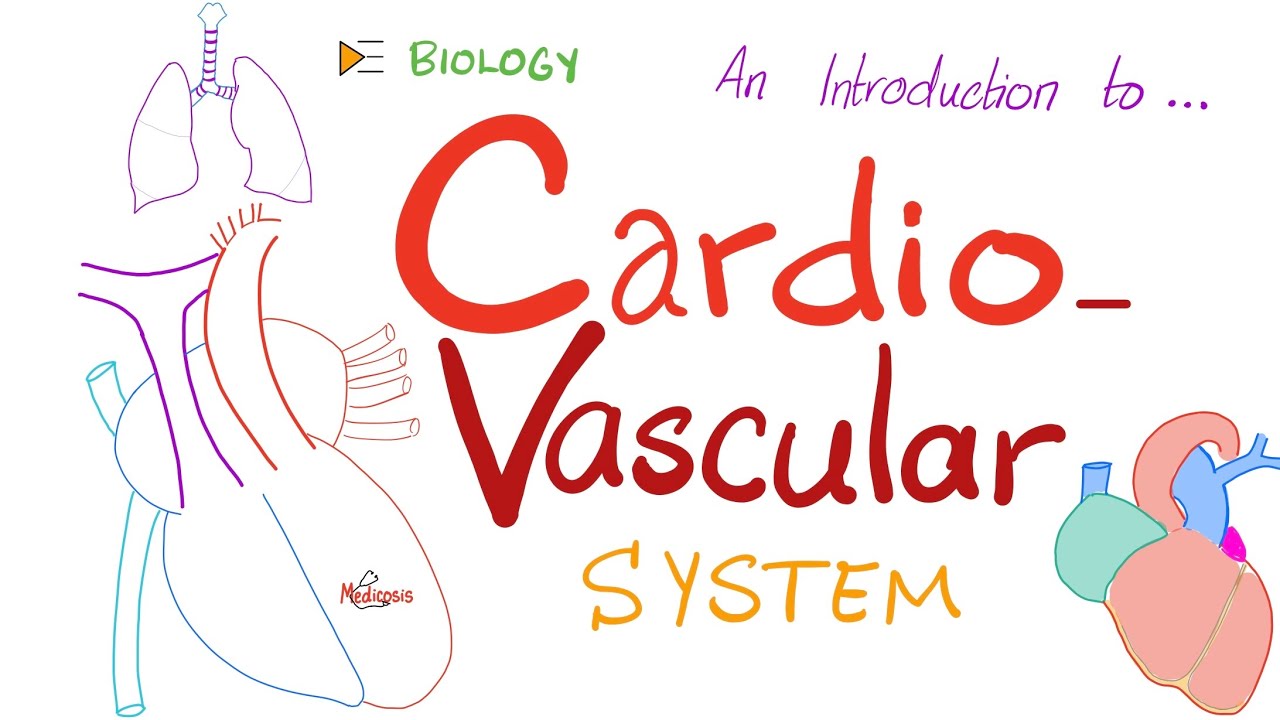Sirkulasi Darah Fetus aka Janin
Summary
TLDRThis video script delves into the fetal circulation system, highlighting the differences between adult and fetal circulation. It explains how a fetus receives oxygen and nutrients through the placenta, as its lungs are not yet functional. The script outlines the anatomical differences in the heart, with the presence of shunts like the ductus venosus and foramen ovale, which facilitate circulation. After birth, these shunts close as the baby's lungs begin to function, and the heart transitions to adult circulation. The video aims to educate viewers on the fascinating changes in the circulatory system from fetal life to infancy.
Takeaways
- 😀 The fetal circulation system differs significantly from that of an adult, as the fetus obtains oxygen and nutrients from the mother through the placenta rather than directly from the environment.
- 🌟 The fetus receives oxygenated and nutrient-rich blood from the mother via the umbilical vein, which then bypasses the liver and mixes with deoxygenated blood in the heart.
- 💡 The ductus venosus shunts blood from the umbilical vein directly to the inferior vena cava, bypassing the liver and ensuring the heart receives well-oxygenated blood.
- 🔍 The foramen ovale, a fetal heart structure, allows blood to flow from the right atrium to the left atrium, ensuring the circulation of oxygenated blood to the body.
- 🚫 The lungs of the fetus are non-functional in utero, leading to the presence of the ductus arteriosus, which shunts blood away from the lungs and into the systemic circulation.
- 🌱 After birth, the umbilical cord is clamped and cut, triggering a series of physiological changes that lead to the closure of fetal circulatory pathways.
- 📉 The increase in oxygen levels post-birth and the decrease in prostaglandins cause the ductus arteriosus to constrict and eventually close.
- 🛑 The lungs begin to function after birth, increasing blood oxygenation and leading to the closure of the foramen ovale as the left atrial pressure rises.
- ⏳ The closure of fetal circulatory structures such as the ductus venosus and foramen ovale typically occurs within hours to days after birth, but the exact timing can vary.
- 🔎 The exact time frame for the complete disappearance of fetal circulatory structures is not well-defined and can range from days to weeks, emphasizing the complexity of the transition from fetal to neonatal circulation.
Q & A
What is the main difference between adult circulation and fetal circulation?
-The main difference is that adults receive oxygen directly from the outside environment through their lungs, while fetuses receive oxygen and nutrients through the placenta from their mother.
How does a fetus obtain oxygen and nutrients?
-A fetus obtains oxygen and nutrients through the placenta from the mother's blood supply.
What are the two main blood vessels that connect the fetus to the placenta?
-The two main blood vessels are the umbilical vein, which carries oxygen-rich blood and nutrients to the fetus, and the umbilical arteries, which carry deoxygenated blood and waste away from the fetus.
What is the function of the ductus venosus in fetal circulation?
-The ductus venosus allows oxygen-rich blood from the umbilical vein to bypass the liver and directly enter the inferior vena cava, which leads to the heart.
Why does the foramen ovale open in a fetus?
-The foramen ovale opens to allow blood to bypass the non-functioning lungs by directing it from the right atrium to the left atrium, ensuring oxygenated blood is circulated to the rest of the body.
What is the role of the ductus arteriosus in fetal circulation?
-The ductus arteriosus allows blood to bypass the lungs by shunting it from the pulmonary artery to the aorta, ensuring that blood is oxygenated through the placenta.
How does the circulation change after a baby is born?
-After birth, the baby's lungs begin to function, and the ductus arteriosus and foramen ovale close, redirecting blood flow to the lungs for oxygenation.
What causes the closure of the ductus arteriosus and foramen ovale after birth?
-The closure is triggered by the increase in oxygen levels in the blood as the baby starts breathing, and the decrease in prostaglandins which were maintaining the patency of these structures in utero.
What happens to the umbilical vessels after the baby is born?
-After the baby is born, the umbilical cord is clamped and cut, and the umbilical vessels undergo vasoconstriction and eventually close off.
How long does it take for the fetal blood vessels to close after birth?
-The timing can vary, but the ductus arteriosus typically constricts within 1-2 hours after birth. The foramen ovale and ductus venosus may take days to weeks to close completely.
What is the significance of the changes in fetal circulation after birth?
-The changes in fetal circulation after birth are significant as they transition the baby from a placental-based oxygen supply to a lung-based respiratory system, which is essential for the baby's survival outside the womb.
Outlines

هذا القسم متوفر فقط للمشتركين. يرجى الترقية للوصول إلى هذه الميزة.
قم بالترقية الآنMindmap

هذا القسم متوفر فقط للمشتركين. يرجى الترقية للوصول إلى هذه الميزة.
قم بالترقية الآنKeywords

هذا القسم متوفر فقط للمشتركين. يرجى الترقية للوصول إلى هذه الميزة.
قم بالترقية الآنHighlights

هذا القسم متوفر فقط للمشتركين. يرجى الترقية للوصول إلى هذه الميزة.
قم بالترقية الآنTranscripts

هذا القسم متوفر فقط للمشتركين. يرجى الترقية للوصول إلى هذه الميزة.
قم بالترقية الآنتصفح المزيد من مقاطع الفيديو ذات الصلة

Foetal (Fetal) Circulation | Before and At Birth | Cardiac Physiology | Embryology

Foetal (Fetal) Circulation

The Cardiovascular System (CVS) ❤️ 🩸 - A Simple Introduction - Biology, Anatomy, Physiology

FETAL CIRCULATION

Anatomi Systema Cardiovasculare : Sirkulasi fetus

Embryology: Development of the Placenta and Fetal Circulation, Animation
5.0 / 5 (0 votes)
